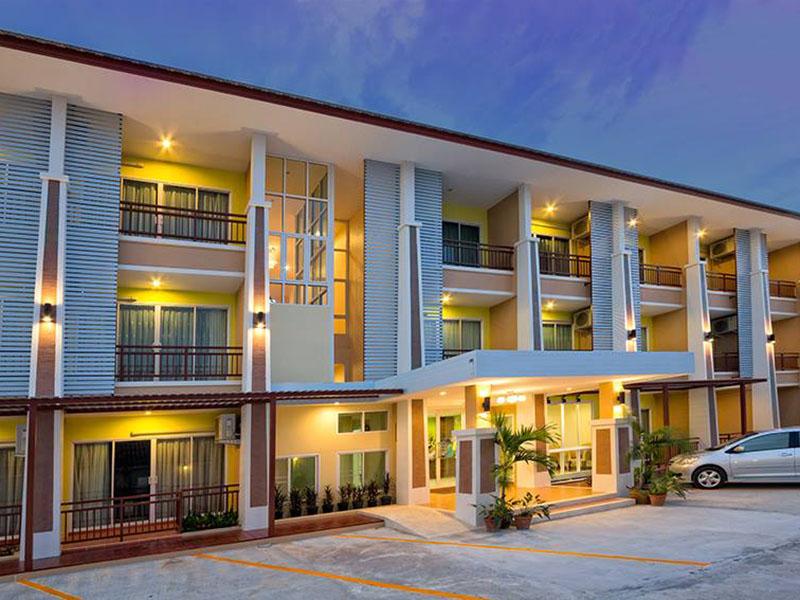“Pay respect to Chao Pu and Chao Ya for good fortune and explore the Virtue Museum, which showcases the history of the Chinese community that settled and flourished in Udon Thani.”
The Thai–Chinese Cultural Center in Udon Thani serves as the central hub for fostering cultural relations between Thais and Chinese people in northeastern Thailand. It was established by the Chao Pu–Ya Shrine Foundation to be a sacred and cultural landmark where faith, moral values, and long-standing traditions of the Thai–Chinese descendants in Udon Thani are preserved and passed down through generations.
The construction of the center was a collaborative effort between the public and private sectors, aimed at creating a space for cultural learning and as a spiritual center for the city’s residents. Located in the same area as the Chao Pu–Ya Shrine, this site is one of the most sacred and respected places in Udon Thani. The shrine is dedicated to the guardian deities believed to protect the city. Many people come here to pay respect and pray for prosperity, success, and good health, as well as to ward off bad luck during their zodiac conflict years.
Occupying more than 40 rai of land, the center was designed in an authentic Chinese architectural style blended with a touch of modernity. The main building features southern Chinese architecture, with gracefully curved roofs decorated with dragon and phoenix motifs symbolizing power and good fortune. The red and gold tones used throughout the architecture represent prosperity and joy in traditional Chinese belief.
Besides the sacred Chao Pu–Ya Shrine, the center houses several key areas of interest:
-
Virtue Museum – Located on the upper floor of the main building, this museum presents exhibitions chronicling the 120-year history of the Chinese diaspora in Udon Thani. It tells the story of 11 major Chinese clans such as Tae, Lim, Tang, Hong, and Ngo, who played an important role in shaping the city’s economy, education, and society. The displays include old photographs, ancient documents, stone inscriptions, and scale models of Chinese merchant ships.
-
Chinese Garden and Koi Pond – Beautifully designed according to feng shui principles, this tranquil garden features stone walkways, arched bridges, pavilions, and a Dragon Gate. The area is surrounded by auspicious trees such as bamboo, pine, and pomegranate. Visitors can feed koi fish in the pond and enjoy the serene atmosphere of the garden.
-
Guanyin Pavilion – The hall enshrines a large white statue of the Goddess of Mercy (Guanyin), adorned with lotus and dragon motifs. This is a popular spot for visitors to offer prayers for compassion, peace, and blessings.
-
Cultural Square and Stage – Used for hosting major annual festivals and events, including:
-
Chinese New Year Festival – Featuring dragon and lion parades, drum performances, and festive fireworks.
-
Mid-Autumn Festival – Celebrated with colorful lanterns, mooncake making, and cultural performances.
-
Vegetarian Festival – With rituals of purification, merit-making, and free vegetarian food distribution to the public.
-
The center also features a tea café and souvenir shop offering authentic Chinese tea, pastries, and auspicious keepsakes. Visitors can also rent traditional qipao or Hanfu costumes for photography within the picturesque garden—making it a favorite photo spot among both Thai and foreign tourists.
Today, the Thai–Chinese Cultural Center is not only a place of worship and cultural preservation but also a major landmark symbolizing the strong connection between Thai and Chinese heritage. It beautifully merges sacred spirituality with aesthetic harmony, allowing visitors to experience serenity, inspiration, and the living legacy of Chinese culture within the modern city of Udon Thani.
How to Get There
- By Private Car: Take Sri Suk or Pho Sri Road heading toward Nong Bua Park or drive past UD Town; you’ll see the entrance to the cultural center. A large parking area is available for visitors.
- By Public Transport: Taxis and local transport services are available throughout the city, as the center is well known and easily accessible.
Travel Tips
-
The Thai–Chinese Cultural Center is both a tourist attraction and a sacred site (Chao Pu–Ya Shrine). Visitors should dress modestly and behave respectfully when entering the shrine or museum buildings.
-
For groups, guided tours with in-depth historical explanations can be arranged by contacting the center’s staff in advance.
-
Visit during the morning or late afternoon to avoid the heat and enjoy the best natural lighting for photography.
-
The Chinese New Year and Mid-Autumn Festival periods are the liveliest times to visit, when the center is adorned with thousands of red lanterns.
-
Please refrain from bringing food or drinks into the shrine area to maintain cleanliness and respect for the sacred environment.
Entrance Fee
- Free of charge
Opening Hours
- Open daily from 09:00 AM to 06:00 PM









































